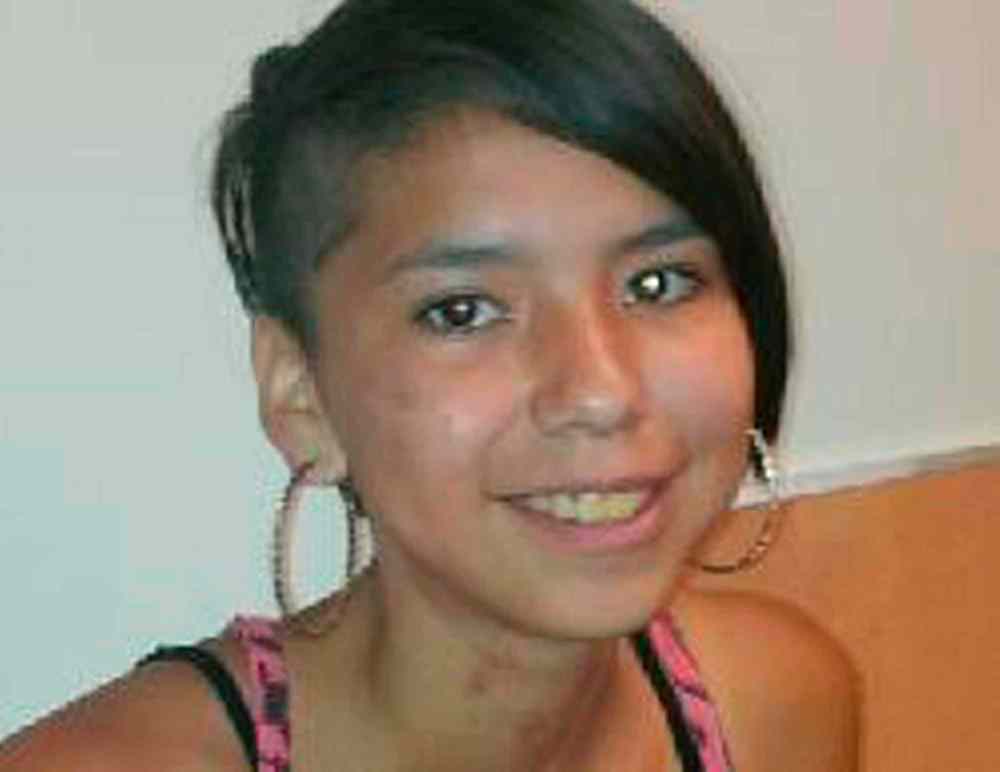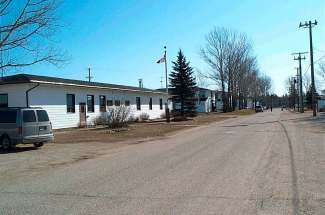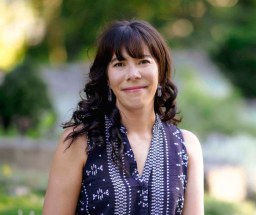Sagkeeng’s scars Manitoba First Nation one tragic example of colonization's traumatic imprint on generations of Indigenous people across Canada
Read this article for free:
or
Already have an account? Log in here »
To continue reading, please subscribe:
Monthly Digital Subscription
$0 for the first 4 weeks*
- Enjoy unlimited reading on winnipegfreepress.com
- Read the E-Edition, our digital replica newspaper
- Access News Break, our award-winning app
- Play interactive puzzles
*No charge for 4 weeks then price increases to the regular rate of $19.00 plus GST every four weeks. Offer available to new and qualified returning subscribers only. Cancel any time.
Monthly Digital Subscription
$4.75/week*
- Enjoy unlimited reading on winnipegfreepress.com
- Read the E-Edition, our digital replica newspaper
- Access News Break, our award-winning app
- Play interactive puzzles
*Billed as $19 plus GST every four weeks. Cancel any time.
To continue reading, please subscribe:
Add Free Press access to your Brandon Sun subscription for only an additional
$1 for the first 4 weeks*
*Your next subscription payment will increase by $1.00 and you will be charged $16.99 plus GST for four weeks. After four weeks, your payment will increase to $23.99 plus GST every four weeks.
Read unlimited articles for free today:
or
Already have an account? Log in here »
Hey there, time traveller!
This article was published 23/07/2021 (1600 days ago), so information in it may no longer be current.
At the mouth of the river.
In Anishinaabemowin, that is what “Sagkeeng” means. It is what the people of Sagkeeng First Nation have called their homeland, located on the lush banks of the powerful Winnipeg River, since time immemorial.
The Canadian government would rename that land the Fort Alexander Indian Reserve, as federal agents carved new territorial boundaries out of the countryside in the aftermath of the signing of Treaty 1.
But in the language of the people who call it home, it has always been Sagkeeng.
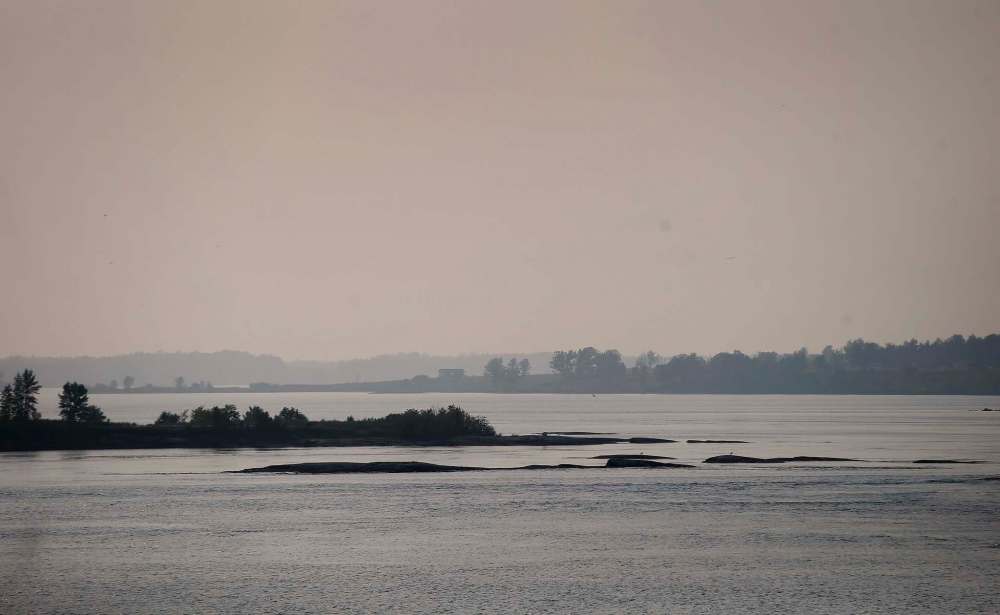
Ever since Sagkeeng Chief Kakakepenaise signed Treaty 1 at Lower Fort Garry in 1871, band members have gathered for an annual celebration — known as Treaty Days — during the last week of July.
The celebration is held at Treaty Point, a peninsula along the banks of the river that cuts through the community, where they gather together to camp for days. Historically, the spot served as a lookout point frequented by explorers, hunters and traders.
From the vantage of Treaty Point, little islands and rock outcroppings can be seen rising from the water, which flows northwest from Lake of the Woods in Ontario and spills into Lake Winnipeg some 235 kilometres away.
Patches of green river grass poke out from the water’s surface and into the fresh open air.
For generations, Treaty Days served as a bonding event for the community. Merchants from distant lands would arrive to trade with band members, and families would gather to camp with one another in tents along the river.
Mutually beneficial agreements can be reached only between good-faith actors who treat one another with respect. And the representatives of the British Crown who signed Treaty 1 with Indigenous communities in the Prairies were anything but good faith.
The celebration also served as an opportunity for Sagkeeng elders and knowledge keepers to pass along their traditional ways to the younger generations.
At night, grandparents, mothers, fathers and friends would gather around the tents, smoking and drinking tea. They would call the young ones to come sit by the fire, where they would regale them with stories and fables, myths and legends.
“We’d listen enraptured and awestruck as the elders imparted their wisdom. We learned why ducks waddle, why muskrats and beavers build dams, why the willow is red,” former Sagkeeng chief Theodore Fontaine wrote decades later.
“Our imaginations were as free and wild as those animals of the forest that we imagined were hunched just behind the edge of the dancing firelight.”
But the treaty the people of Sagkeeng gathered to celebrate each year would help lead to the destruction of the traditions that connected each new generation to the one that preceded it.
Mutually beneficial agreements can be reached only between good-faith actors who treat one another with respect. And the representatives of the British Crown who signed Treaty 1 with Indigenous communities in the Prairies were anything but good faith.
The people of Sagkeeng saw the signing of Treaty 1 as the first step in an ongoing relationship with the federal government that would lead to peaceful co-existence and the survival of their traditional way of life.
In contrast, government negotiators saw Treaty 1 as a static document in which Anishinaabe people forfeited their rights to vast swaths of land in exchange for compensation.
Liz Gray, a teacher and mentor in Sagkeeng, has said the treaty was made with “crooks” and resulted in land being “stolen, resources taken, environment destroyed.”
It was a process that would repeat through history, first with treaty agreements, and later with a deal struck between Sagkeeng leadership and the soon-to-be Manitoba Pulp and Paper Company in the 1920s, which band members likened to a “swindle.”

In 1874, three years after the treaty signing, the 21,674 acres of the Fort Alexander Indian Reserve were surveyed. Six years after that, the Roman Catholic Church opened its first parish in the community.
And in 1905 — as part of the terms of Treaty 1 — a school for Indigenous children was built in Sagkeeng. But the school did not impart on the children the sort of education their parents and ancestors had hoped it would.
Where the aim of education should be to foster, this school sought to repress; where the aim of education should be to inspire, this school sought to tame; and where the aim of education should be to lift up, this school sought to tamp down.
The Fort Alexander Indian Residential School — which operated until 1970 — left deep, intergenerational scars on the people of Sagkeeng, scars that linger to this day.
And each time those scars seemed to heal, new events ripped them open again.
● ● ●
Claude Guimond hardly remembers the night those men died, mostly because he’d been drinking for days.
It was 2017 and Guimond’s life was falling apart. He had just turned 53 years old and things could not have been worse.
When a man’s life fails, it often isn’t one terrible, dramatic mistake that does him in. It is a prolonged process of erosion, not a landslide.
And the sequence of events that led Guimond to the dark and desperate place he found himself in that winter could be traced back generations, if not centuries.
When Guimond celebrated his 53rd birthday on Feb. 11, 2017, he had a lot on his mind.
His wife of 33 years, Cynthia, was dying of cancer. His eldest daughter, Shaylene, was estranged from the family and addicted to methamphetamine. And his youngest daughter, Shezna, had begun experimenting with illegal drugs.
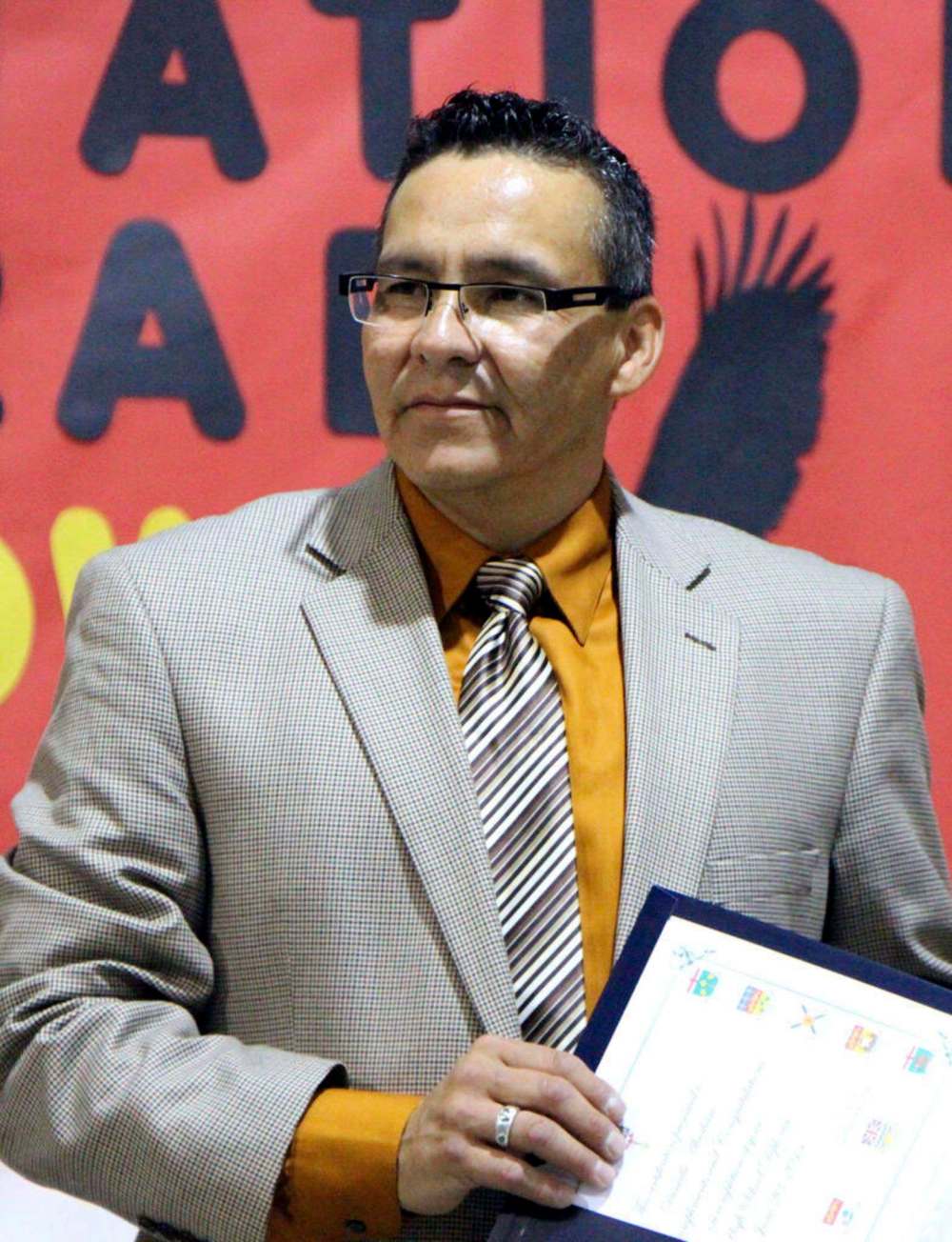
For more than a decade, he’d watched helplessly as street gangs from Winnipeg imported a methamphetamine crisis into his home community of Sagkeeng First Nation, where he was born and lived most his life.
It had all gone down before his eyes like a slow-motion train wreck.
Guimond had lost four students from Sagkeeng Anicinabe High School, where he served as school principal, to illegal drugs. Sometimes he lay awake at night, worried the phone might ring and his daughter would be next.
Like his parents before him, Guimond had struggled on and off with problem drinking throughout his life. At one point, shortly after he graduated from the University of Manitoba, he strung together 15 years of sober living.
But eventually he slipped. And when he slipped, he fell hard.
As the night of Feb. 27, 2017 bled into the early morning hours of Feb. 28, Guimond found himself at the tail end of a three-day binge-drinking session. With him was Jason Andrew Bruyere, 26, who was dating his youngest daughter.
Like Guimond, Bruyere had reason to be angry with drug dealers in the region: the year prior, his sister had overdosed and died.
Years earlier, when Guimond’s first daughter had become addicted to drugs, he went to the RCMP detachment in the nearby community of Powerview-Pine Falls with a list of drug dealers and their addresses.
He left convinced the RCMP wasn’t doing enough to stem the tide of illicit drugs rolling in from Winnipeg, located 125 kilometres southwest down Highway 59.
Guimond decided to take matters into his own hands, going around to the homes of dealers and telling them to stop what they were doing. If they wouldn’t stop dealing drugs in the community, he asked them to at least not sell to his daughter.
Since he was a respected community leader, the dealers agreed to the latter request. For a time, his daughter found it difficult to feed her habit.
Years later, when his youngest daughter started taking drugs, Guimond took the same approach: he went to the RCMP and asked them to intervene. When that failed, he went door-to-door.
But this time, the response was different, and hostile: Guimond was threatened with violence and told to mind his own business — or else.
On Feb. 28 — in a near-blackout from alcohol — Guimond hatched a plan with his daughter’s boyfriend to put a scare into two local drug dealers who lived in a small house at the end of a side street in a nearby town.
Guimond, a military veteran, blackened his face with paint and grabbed a rifle. Then the two men set off into the dark of night.
The home sits on Marie Avenue in St. Georges, a tiny town located seven kilometres east of Sagkeeng along Highway 11. There is a single window in the front of the home, which sits back on the lot and is partially obscured by trees.
Sometime before 2 a.m. on that fateful night, there was a knock at the front door. Soon after, the shooting started.
By the time police arrived at 2:15 a.m., Steven Chevrefils, 35, was on the floor in the kitchen. He’d been shot twice — once in the head and once in the chest — and his girlfriend was crying over his dead body.
Downstairs, next to a marijuana grow-operation, was Jody Brown, 43, who’d been shot once in the chest. A next-door neighbour ran over shortly after the shooting and was desperately performing CPR in a futile effort to save Brown’s life.
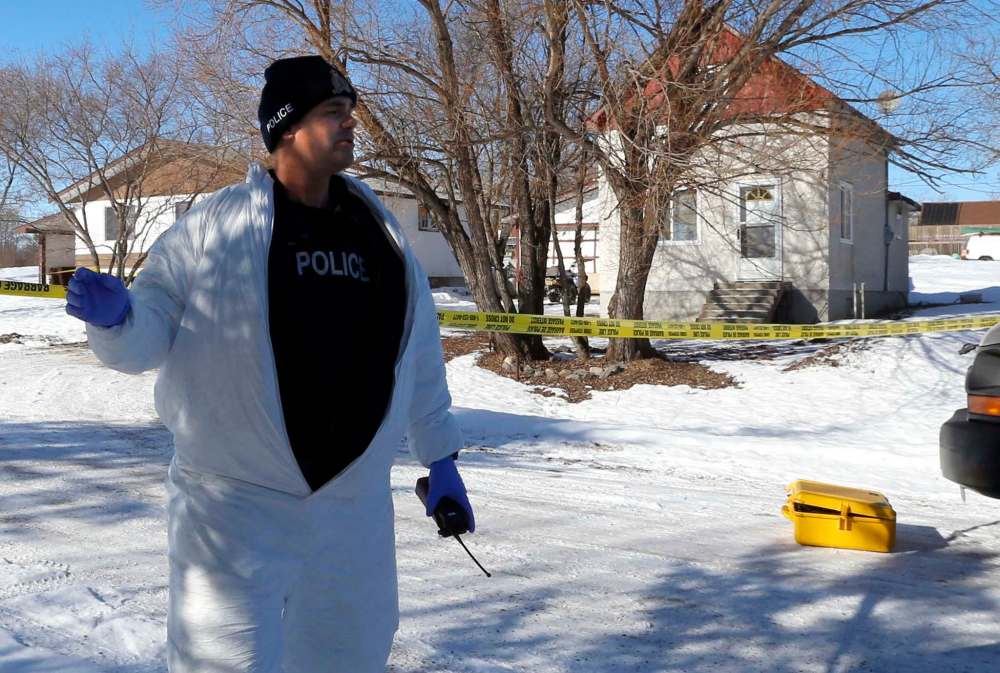
During the autopsies, Brown and Chevrefils were found to have cocaine, methamphetamine and amphetamines in their systems. Later, Crown prosecutors would admit in court that drugs were being sold from their shared home.
It would take more than 21 months before the RCMP gathered enough evidence to arrest Guimond. The Mounties’ forensic unit pulled a partial DNA sample from a shell casing at the scene, which linked him to the crime.
His arrest in December 2018 — shortly after the death of his wife — sent shock waves through Sagkeeng.
After the Mounties obtained wiretap recordings of him admitting guilt to a family member on the phone, Guimond cut a plea deal on two counts of second-degree murder. He was sentenced to life in prison with no possibility of parole for 14 years.
For his role as an accomplice, Bruyere was sentenced to five years behind bars.
Many wondered how someone like Guimond — an upstanding member of the community, a schoolteacher and principal, a second father to wayward kids could commit such a cold-blooded crime.
But a clue came during the psychiatric evaluation mandated for his pre-sentencing report. During the interview, Guimond reflected upon the personal decisions and social forces that had driven him to violence.
While he expressed regret and remorse for his actions — sentiments he would repeat during his sentencing hearing — he also spoke of the impact colonialism had on his family and home community.
In particular, he spoke about abuse at the Fort Alexander Indian Residential School. Both his grandparents and parents had been forced to attend the school as children, and after it was turned into a day school, Guimond had attended.
Like many others in Sagkeeng, the school had deeply scarred him and those he loved. And even after the school was shuttered and demolished, the scars remained.
The school haunted him like a ghost.
● ● ●
For generations, Sagkeeng served as an important hub in the fur trade, and during the first half of the 19th century, band members lived a largely nomadic — albeit structured — lifestyle.
In the summer, they would meet at the Manitou Rapids to fish and make medicine. In the fall, they would go to Lac du Bonnet to gather wild rice. And in the winter, they would camp on hunting grounds as close as Catfish Creek and as far as Black River.
Today, there are 7,637 Sagkeeng band members, with roughly 3,350 living on-reserve.
The school forcibly separated generations of children from their parents, stripping them of their language and cultural identity. Even by the standards of the Canadian residential school system as a whole, the Fort Alexander school was particularly brutal.
The Métis academic and activist Howard Adams wrote that the reserve system in Canada created “prisons of grass,” which “marked the beginning of an era of increasing oppression and control of Indigenous peoples (by) church and state.”
In his 1961 study of colonialism, The Wretched of the Earth, psychiatrist Frantz Fanon detailed how the colonial project never stops at relegating its subjects to confined spaces — it must go further.
“The colonist is not content with physically limiting the space of the colonized, ie: with the help of his agents of law and order,” Fanon wrote.
“As if to illustrate the totalitarian nature of colonial exploitation, the colonist turns the colonized into a kind of quintessence of evil.”
The chief instrument through which this was achieved in Sagkeeng was the Fort Alexander Indian Residential School, which was run by a Catholic missionary order of nuns called the Oblates of Mary Immaculate.
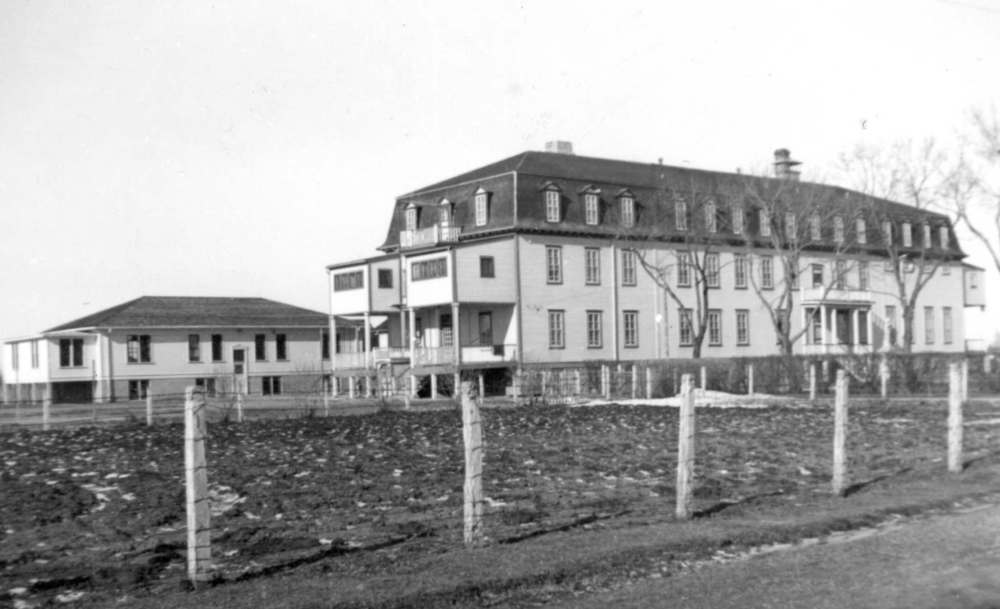
The school forcibly separated generations of children from their parents, stripping them of their language and cultural identity. Even by the standards of the Canadian residential school system as a whole, the Fort Alexander school was particularly brutal.
As Fanon wrote, the role of the church in the colonial project is not to “call the colonized to the ways of God, but to the ways of the white man, to the ways of the master, the ways of the oppressor.”
Theodore Fontaine, a survivor and former chief of Sagkeeng, who wrote a book in 2010 called The Broken Circle: The Dark Legacy of Indian Residential Schools, said the children were instilled with a “deep sense and belief in (their) unworthiness.”
They were instructed not to speak their “savage language,” and if they disobeyed, their mouths were washed out with soap, or they were strapped and beaten with rulers or locked in dark closets.
In his book, Fontaine recalls getting caught speaking the Ojibwa language and being locked in a closet under the stairs where cleaning supplies were stored. There in the darkness, he began to panic.
When he tried to sit up, he banged his head. He peered under the crack in the bottom of the door but could see nothing. Eventually, he tried to distract himself by thinking back to memories he had with his family at Treaty Point.
For years afterwards, he could not sleep without a light on.
The use of the colonizer’s language served two important functions at the school: it helped strip the children of their cultural identities, and it represented an acknowledgment of colonial domination.
In order to further disconnect them from their culture, the children were given Christian names and assigned numbers. Their hair was cut and they were dressed in uniforms. Life was strictly regimented, with movement controlled by the ringing of a bell.
Andrew Woolford, a professor of sociology and criminology at the University of Manitoba, whose work focuses on genocide studies, says the Fort Alexander Indian Residential School represented a vicious assault on the people of Sagkeeng First Nation.
And while people often think of “cultural genocide” as being distinct from physical genocide, Woolford is adamant the two are one and the same.
“Cultural genocide is genocide.… One of the ways you destroy a group is by destroying the bonds that exist between group members,” Woolford says during a recent phone interview.
“Those bonds are sustained through culture. The attempt to eliminate a culture is one of the ways in which a group is destroyed. There were also forms of physical destruction through the deaths of young people at the schools.”
For his 2015 book, This Benevolent Experiment: Indigenous Boarding Schools, Genocide and Redress in Canada and the United States, Woolford studied various residential schools throughout North America.
His research made clear the Fort Alexander school was “very violent.”
“If one were to only look at government records, they’re quite sanitized. But speaking to survivors, I’ve yet to meet anyone who attended that school who wasn’t themselves a victim of, or a witness to, extreme forms of violence,” Woolford says.
Runaways were a frequent problem from its earliest years of operation. In 1928, two boys snuck away from the school and commandeered a boat in an effort to return to their homes. They drowned in their quest for freedom.
The abuse perpetrated by priests and nuns at the school first came to public attention in 1990, when then-grand chief of the Assembly of Manitoba Chiefs, Phil Fontaine, spoke out about his childhood experiences.
Fontaine revealed he’d been sexually abused at the school. It was a watershed moment in Canadian history that helped plant a seed that came to bloom 18 years later with the Truth and Reconciliation Commission.
“My Grade 3 class, if there were 20 boys in this particular class, every single one of them… would have experienced what I experienced. They’ve experienced some aspect of sexual abuse,” Fontaine told CBC TV.
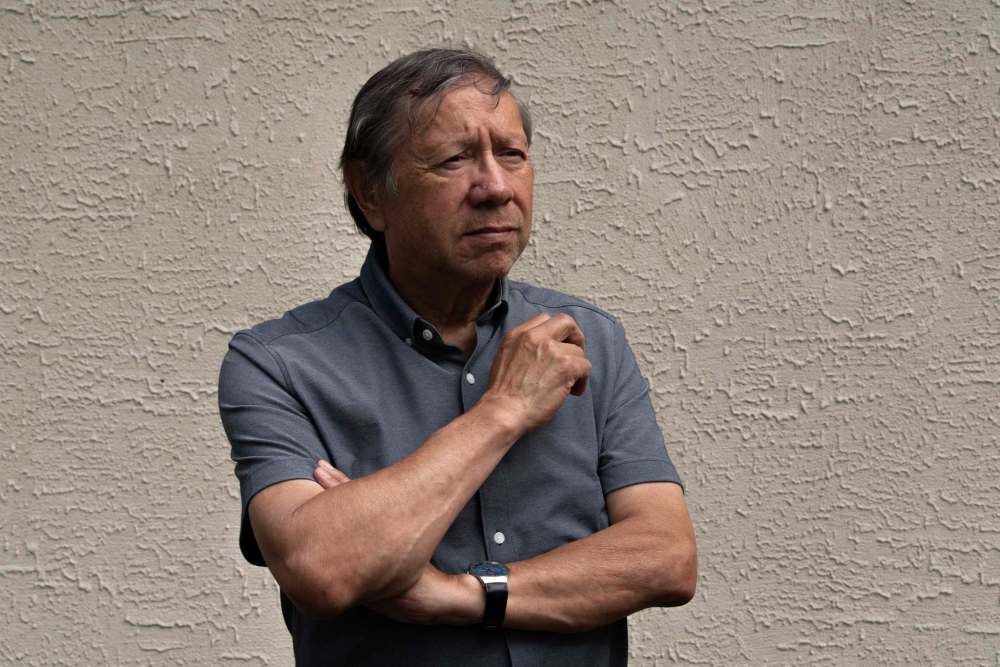
One of Fontaine’s classmates was Dave Rundle, whose memories from the first 10 years of his life in Sagkeeng are of living off the land and being surrounded by family and love.
All of that changed when he was taken to the school in 1955. He was sexually abused by a priest on two occasions and abused in myriad other ways countless times.
“I think white people need to hear about residential schools from different people. The punishment was so outrageous back then. They would be charged with child abuse nowadays. Even our own people, the younger people, need to hear this,” Rundle says.
“When I left the residential school, my self-esteem, my self-pride, my confidence, was very low. You might say I was ashamed of who I was.”
When the remains of 215 children were found in unmarked graves on the grounds of a former residential school in Kamloops, B.C. in May, Rundle says the news shook him to the core.
Immediately, his childhood experiences came rushing back to him.
“I felt like I was close to the situation, since I’d been in a residential school… I was probably (feeling) down like everybody else that experienced that,” he says.
In order to make himself feel better, he visited his grandchildren. Rundle says it’s impossible to feel sad when he’s in their presence. For him, it’s therapy.
It’s a form of therapy his grandparents were robbed of more than a half-century ago, when a priest showed up at his family’s Sagkeeng home in a Model-T Ford and stole him and his little brother away.
He remembers watching his mother and grandmother wave goodbye as tears streamed down their faces. In the backseat, Rundle began to cry too, as the vehicle sped off towards the horrors that awaited him.
Sitting in his living room in the spring, watching the news of the grisly discovery of unmarked graves in Kamloops flash across his TV screen, Rundle says a disturbing thought crossed his mind.
“That could have been me.”
● ● ●
Mary Courchene remembers her mother leading her by the hand to the steps of the Fort Alexander Indian Residential School when she was five years old. It was 1945 and the young girl from Sagkeeng was excited for two reasons.
The first was that she knew she was going to learn a new language — the funny-sounding one her parents sometimes spoke when they didn’t want her to understand what they were saying.
The second reason was because she was going to learn how to read. The only reading material at her home were comic books, which her father sometimes read to her, and she wanted to learn to read them herself.
When the front doors of the imposing, three-storey building swung open, out stepped a white woman wearing odd clothes: a long black dress and a white shawl that fell to her ankles.
The nun took Mary inside and her mother went home. For the next decade, this is where she lived 10 months of the year — despite the fact her family home was only a few minutes’ walk from the school.
Soon after her arrival, the nun unbraided Mary’s hair and took out a pair of scissors. As the nun cut off her hair, she cried.
“I didn’t know what the heck was happening. That’s what I remember from my first day of school,” Courchene says.
Tears would soon become a routine part of life.
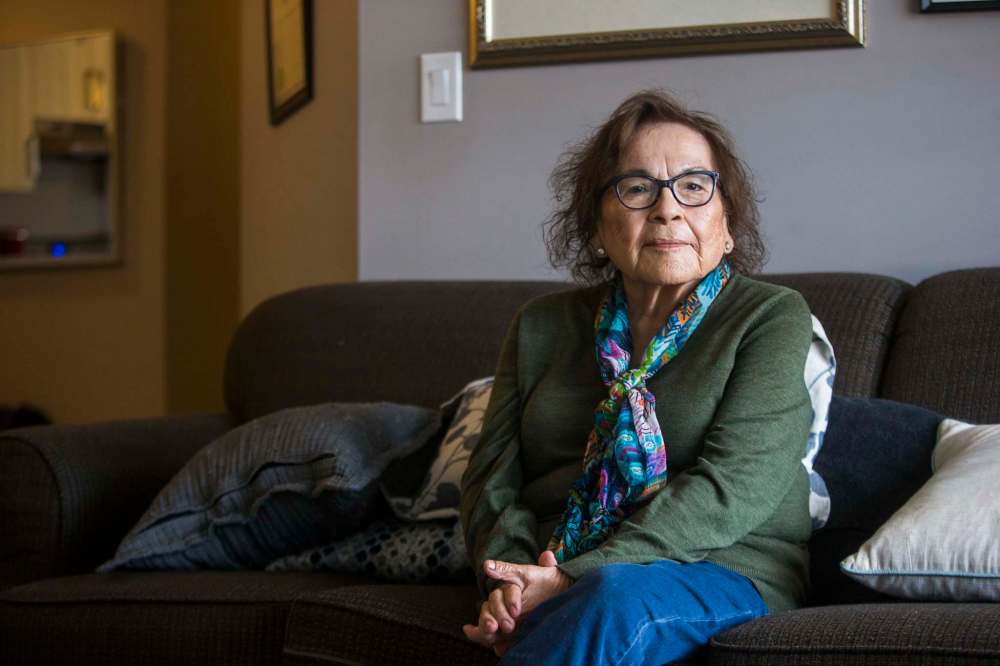
“For the first couple years of my life in there, I spent nights crying, wanting to go home,” Courchene says, sitting in the living room of her Winnipeg home during a recent interview.
“Life in there was cruel. Life in there was awful. For children, that’s supposed to be the best time of their lives, their growing-up years. What was supposed to be the best time of my growing-up years instead became a life of horror.”
Courchene remembers psychological, physical and sexual abuse being rampant at the school. There was one priest who was known to sexually abuse the boys, and another who was known to prey on the girls.
“It was common knowledge…. The next year, (the priest who targeted the girls) was sent to another location,” Courchene says.
“I heard what he’d done to the other young girls.”
The only time they were able to speak their language, Courchene says, is when they were out of earshot from the priests and nuns.
As she got older, Courchene was given more responsibility, largely because she was seen as a good Catholic. She was eventually tasked with cleaning up the dining table after the priests had finished supper.
The priests and nuns were always given the best food, while the students were fed meals of poor nutritional value and almost always went hungry.
Courchene learned to steal scraps of food from the priests’ plates as she cleaned, which she would hide in her pockets. After she was finished her chores, she would go outside and distribute the scraps among her friends.
The school grounds were entirely fenced in and Courchene remembers one side having barbed wire at the top. What was most difficult for her, was that some days, she could see her parents from there.
Nevertheless, she was forbidden to leave. While some residential schools were located far from the children’s community, Courchene says it was worse to be so close to home yet still so far away. She likens it to “psychological torture.”
“There was a certain window in the dorm where I could look out and see my house, so every day — every day — I used to steal a few moments to run upstairs and go and check,” she says.
“If I saw my mom hanging clothes on the clothesline, it would give me such a good feeling…. Or if I saw my dad sawing wood. Or if I saw smoke coming out of the stovepipe. That would warm me. It was my connection for the day.”
Every year when school ended, the children would have to wait for their parents to pick them up. They would spend two months at home before they were mandated to return.
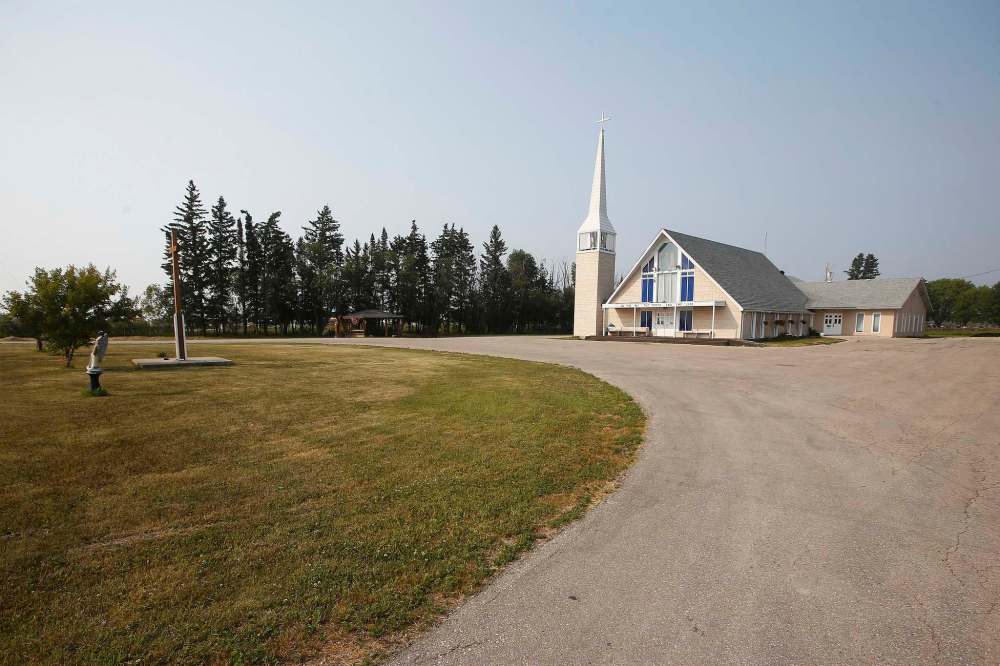
But one year, when she was about 12 years old, one of the nuns told Courchene she could leave on her own since her home was so close.
“I got out those doors and it was a beautiful summer day… I’m running home. I thought to myself, ‘I could do this every day.’ I often wondered that, ‘Why couldn’t I go home every day?” she recalls.
“That was part of my loneliness. My parents were so close.”
When she got home, Courchene recalls her father was so happy to see her. Her mother was sitting at the table drinking a cup of tea. As she arrived, her parents began speaking in Anishinaabemowin.
“Suddenly this feeling of hatred came over me. There they were, sitting down in this simple home, speaking a language that we were not supposed to speak, and hating them. It was just such an awful feeling of hatred,” she says.
“I didn’t hate them because I thought they had abandoned me. I hated them because they were Indian and they were speaking this language. An awful, awful language that I hated… I was totally brainwashed. I hated who I was. I hated my parents.”
She looked at her parents and told them they would only speak English in their home from now on. Her father looked at her with tears in his eyes, before sitting down and shaking his head.
“He said to my mom, (in Anishinaabemowin), ‘Then perhaps we never get to speak to this little girl again,’” Courchene recalls.
“He said, ‘I don’t know her.’”
Despite the fact she’d been brainwashed to hate her culture as a child, Courchene remains fluent in Anishinaabemowin, and credits her father for it.
Every time she would speak Anishinaabemowin, he would encourage her by saying, “Speak your language. Speak your language.”
In 2020, Courchene was named to the Order of Manitoba for her work in Winnipeg schools, where she’s tried to help foster greater understanding between Indigenous and non-Indigenous communities.
Most recently, she’s worked at developing a curriculum with the Manitoba Teachers’ Society — called Life of a Child in Fort Alexander Indian Residential School: Mary’s Story — which will be launched in classrooms in the fall.
After she was named to the Order of Manitoba, Courchene was interviewed by the Aboriginal Peoples Television Network, where she was asked what her worst experience was during her time in residential school.
Courchene told the interviewer the worst thing of all was the loneliness.
Watching that interview on TV was Dave Rundle, seated in his Winnipeg home with his wife. The answer hit him like a slap to the face.
“She said, ‘the loneliness.’ And it was like it had happened yesterday. I started getting tears in my eyes and my wife said to me, ‘If you’ve got to cry, go ahead,’” Rundle says.
“That’s 60 years later, for Pete’s sake. It still has that impact on me.”
● ● ●
When Staff Sgt. Jeffrey Monkman moved to Powerview-Pine Falls in 2018 to take over the RCMP detachment in the community, he had his work cut out for him.
The detachment — which covers Powerview-Pine Falls, St. Georges and several First Nations communities, including Sagkeeng — had been fighting an uphill battle against the drug trade for years.
Cries for help were coming from the Powerview-Pine Falls town council, and Sagkeeng First Nation Chief Derrick Henderson described it as “an epidemic of crystal meth.”
That summer, the region was averaging two break-ins per day, largely fuelled by people looking to feed their addiction. Property crime was skyrocketing and citizens were at their wits’ end. Some residents reported being afraid to stay in their own homes.
“People were desperate to try and curb it,” Monkman says, sitting behind his desk at the RCMP headquarters in Powerview-Pine Falls.
“I don’t think we’ve gotten rid of crystal meth, but we’re doing what we can to have an impact on the crystal meth issue here.”

Monkman says Powerview-Pine Falls — which sits smack-dab in between Sagkeeng First Nation and St. Georges — serves as a hub for the drug trade in the region, with street gangs from Winnipeg sending out shipments to the municipality.
“From here, it goes up (Provincial Road 304) to northern communities like Bloodvein, Hollow Water, Black River, Berens (River). This would be the gateway to those communities,” he says.
“Typically, it all stems from organized crime. If people are bringing drugs in, there’s somebody higher level they’re bringing it in for.”
For years, a perfect storm had been brewing for the explosion of a drug crisis.
In 2009, the pulp mill in Powerview-Pine Falls, which had served as the economic lifeblood of the community for generations, closed its doors for good following a labour dispute. That left roughly one-fifth of the town’s population out of work overnight.
By the time the 2016 Statistics Canada census came to town — the latest data available — there was an unemployment rate of 17.9 per cent in Powerview-Pine Falls.
On Sagkeeng, the situation was worse. The median income was $12,624 per person, and $30,592 per household. The unemployment rate (23.4 per cent) was higher than the employment rate (22.7 per cent).
In early 2020, Staff Sgt. Jeffrey Monkman says the Powerview-Pine Falls detachment finally had sufficient resources to switch from a reactive approach to the drug trade to a proactive strategy aimed at dismantling trafficking networks.
The First Nation was also in the grips of a housing crisis: of the 525 occupied private dwellings on Sagkeeng territory, 305 were identified as needing “major repairs.”
The region has long suffered from elevated crime rates. According to data from Statistics Canada, Powerview-Pine Falls has a crime-severity index of 285.84 and a violent crime-severity index of 387.37.
For the sake of comparison, the CSI and VCSI in Canada is 79.45 and 89.67; in Manitoba, it’s 139.26 and 188.92; and in Winnipeg, it’s 138.18 and 186.43.
Sagkeeng, in particular, has been connected to numerous high-profile crimes in recent years.
It was the home of Tina Fontaine, a 15-year-old runaway whose body was pulled from Winnipeg’s Red River in August 2014. Her death helped spark the creation of the National Inquiry into Missing and Murdered Indigenous Women and Girls.
The community was again thrust into the spotlight in April 2017 when 19-year-old Serena McKay was beaten to death by two teenage girls who filmed the assault and posted it to social media.
In 2015, a CBC analysis identified Sagkeeng First Nation as having the highest concentration of unsolved cases of missing and murdered Indigenous women and girls in the country.
But struggles with crime are not limited to Sagkeeng, and the RCMP detachment has long considered Sagkeeng, Powerview-Pine Falls and St. Georges — for all intents and purposes — as one extended community along Highway 11.
Not all of the crimes the Mounties were dealing with involved deaths, and the drug trade in the region often led to more cyclical run-ins with the law — assaults, robberies, possession of stolen property and court-order breaches.
The Free Press has reviewed court records for dozens of people accused of crimes in the region in the past two years and many have starkly similar backgrounds: a limited education and a family legacy of residential schools.
In early 2020, Monkman says the Powerview-Pine Falls detachment finally had sufficient resources to switch from a reactive approach to the drug trade to a proactive strategy aimed at dismantling trafficking networks.
The results have been encouraging, with at least 17 drug and firearm busts publicly announced by the detachment since the new strategy was implemented. These days, Monkman says, his investigators are executing two to three drug warrants per month.
“We’ve got the tools. We’ve got buy-in from the community. It took one and then it just exploded, with people calling into us all the time,” he says.
“We can’t do this alone. People are setting up cameras and providing us with video footage of drug houses. People are fed up. They don’t want to see it in the community anymore.”
But that doesn’t mean the street gangs from Winnipeg have rolled back their operations.
On April 28, a group of three suspected gang members from Winnipeg loaded into an SUV with a firearm and drove to Powerview-Pine Falls to collect drug debts.
When they got there they kidnapped a woman at gunpoint and began driving to drug houses in the region, using their hostage to help gain access to homes.
The crew committed robberies, break-ins and other crimes as they went about their collections. The crime spree culminated in the late-night shooting of a trailer in Powerview-Pine Falls.
Two people — Thomas Peebles, 29, and Claudia Sumner, 19, both of Winnipeg — were arrested and charged with a slew of offences. An arrest warrant was also issued for Joseph Spence, 22, of Winnipeg.
Monkman admits the COVID-19 pandemic had a positive impact on his detachment’s ability to crack down on the drug trade. Calls for service fell dramatically, freeing up resources for investigations.
And First Nations communities, including Sagkeeng, set up checkpoints to control the flow of people in and out of their territories, which led to chance drug busts.
“Early on in the pandemic, there was no crystal meth available for a month to a month-and-a-half. But what we saw was people getting into (synthetic heroin) and we saw some overdoses with that,” Monkman says.
“It’s supply and demand. If you’ve got demand, there’s always supply. Our focus now is trying to get rid of that demand.”
Monkman says the legacy of the Fort Alexander Indian Residential School has had a profound impact on the region, and the RCMP, which helped to forcibly remove children from their families, has to grapple with the role it played in the enforcement of that system.
“I used to be in our Major Crimes Unit in Winnipeg. I was up here for the residential school investigation and interviewed elders. I had the opportunity to talk to a lot of people and listen to their stories and suffering,” he says.
“It kind of chokes you up just to think about what they had to go through.… It’s hard, too, because you have to acknowledge that we played a part in it…. We realize our part in the history of this country. We want to work towards reconciliation.”
● ● ●
When asked how many of the struggles facing Sagkeeng First Nation today can be traced back to the Fort Alexander Indian Residential School, Bernalda Robinson’s answer is succinct: “100 per cent.”
Robinson has worked at the Mikaaming Mino Pimatiziwin Healing Lodge in Sagkeeng since 2008. For the past five years, she has served as executive director.
The healing lodge — a member of the Canadian Accreditation Council — has 30 full-time staff members. Currently, it operates a 14-bed residential treatment program to help Indigenous and Inuit people struggling with substance abuse.
“We do have a lot of people who are utilizing meth.… A lot of their preferences for substances range from meth to alcohol to opioids. It’s not one or the other,” Robinson says during a recent phone interview.
During the 2019-20 fiscal year, 88 people attended the lodge’s residential program.
From October 2019 to April 2021, it also had 92 applicants to, 60 participants in and 31 graduates from its day program. But during the COVID-19 pandemic, the agency had to shutter the day program due to a lack of resources.
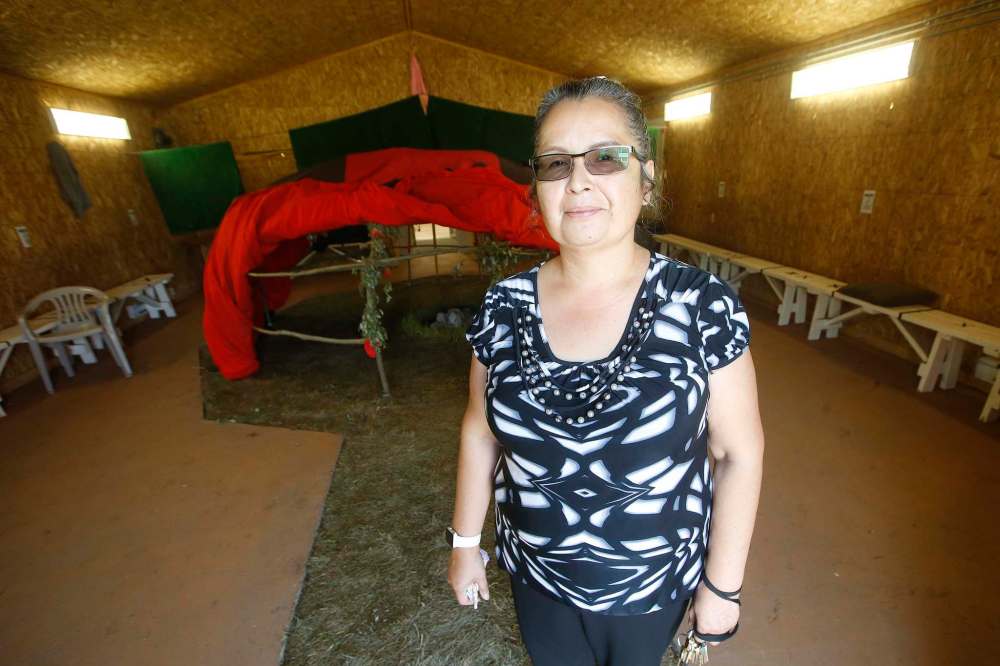
“Our programming is based on First Nations culture, acknowledging spirits…. We have elders available. It’s a blend and mix of western medicine along with traditional medicine,” Robinson says.
“Everyone knows what’s happening right now with residential schools. We find the thing people score high on, during our evaluations, is the cultural component. They never learned about those traditional teachings. A lot of people don’t have a spiritual name.”
Robinson estimates 90 per cent of the people who pass through the healing lodge’s doors have been directly affected by residential schools. And even those who haven’t been directly affected come from communities impacted by colonialism in other ways.
Despite the success of the lodge and the desperate need for First Nations-led programming based on harm-reduction principles, Robinson says securing funding is a constant battle.
“We don’t have any room to have more programs beside the residential treatment program.… We submitted a proposal to the funders, which is the First Nations and Inuit Health Branch of Health Canada,” Robinson says.
“We submitted that proposal in 2017 for a new building with a withdrawal-management unit, in conjunction with a day program. We haven’t heard anything yet because they keep on saying there’s no capital funding.”
But that lack of funding hasn’t stopped Robinson from doing what she can with the resources she has, as well as drawing up ambitious plans for the future when more money may be at her disposal.
The lodge is in the process of setting up a temporary seven-bed stabilization unit — which will run out of a rented space at the Pine Falls Hospital — where participants can go to detox from drugs.
The plan is for the stabilization unit to keep open two beds for transfers from the RCMP detachment in Powerview-Pine Falls, so people arrested for minor offences while intoxicated have a safe place to go and don’t have to be formally charged.
Robinson says the work the healing lodge does, and the struggles of the participants who access its programming, cannot be untangled from the legacy of colonialism in the region.
“So many of them still believe their culture is pagan.… Our culture is still looked down upon by a lot of people. When we do colonization teachings, a lot of them have never even heard of that. They never heard about colonization,” she says.
“There’s a shift in them that happens when they get their spirit name and attend ceremonies.… Connecting to spirit is connecting to who they are. They leave with a sense of hope and belonging, and they understand why they were the way they were.”
People who graduate from the residential program are often anxious to return home, due to a lack of supports where they live. As a result, Robinson hopes to one day establish a community outreach program.
She also hopes to secure funding to turn the temporary stabilization unit into a permanent operation. In addition, she wants to relaunch the day program, if possible.
But that will happen only if she can secure more funding.
“I need capital funding for a new building and additional funding for operations for withdrawal management. Right now, for our residential program, we’re funded for 14 beds. We’re always taking in 18 and up,” she says.
“The other exciting venture we’re hoping to embark on is the purchase of a land-based site, where we could camp or maybe even have a cabin, somewhere we could take our participants… for traditional culture and connecting to land.”
Reconciliation is a word often bandied about by politicians and white Canadians. Prime Minister Justin Trudeau made it one of the centerpieces of his first federal election campaign in 2015.
But if Canadian society is serious about reconciliation, then Robinson says it’s projects like these that directly seek to repair the harm caused by residential schools and the legacy of settler-colonialism that must be financially supported.
“It shouldn’t be so hard to fund all these projects that are making a difference. And we are making a difference. One thing I’m super-proud of is that we have all the data available on all the work we’ve done,” she says.
“You don’t have to look too hard to see the successes — yet we’re struggling.”
● ● ●
There are spirits haunting Canada — the spirits of stolen Indigenous children who were abused in life and dishonoured in death.
And to finally lay those spirits to rest, we must not only identify the remaining unmarked graves scattered across the country, but also come to know Canada’s true history for the first time.
To each generation falls a deed — this is ours.
Let our generation not shirk its deed.
Right now, the people of Sagkeeng First Nation — like so many Indigenous communities across Canada — are once again bracing for difficult revelations.
In the aftermath of the Kamloops discovery, Sagkeeng leadership raised $20,000 to conduct ground-penetrating radar searches on their territory. They could have waited to secure federal funding for the search.
But they have spent enough time waiting.
Elders have long suspected there could be unmarked graves in Sagkeeng. The community plans to search the former residential school grounds and various other sites in the coming weeks and months.
All told, children from 21 communities attended the Fort Alexander Indian Residential School, meaning future discoveries could have implications that ripple far beyond the Winnipeg River and the boundaries of Sagkeeng First Nation.
It has always been known that some of those children never made it home.
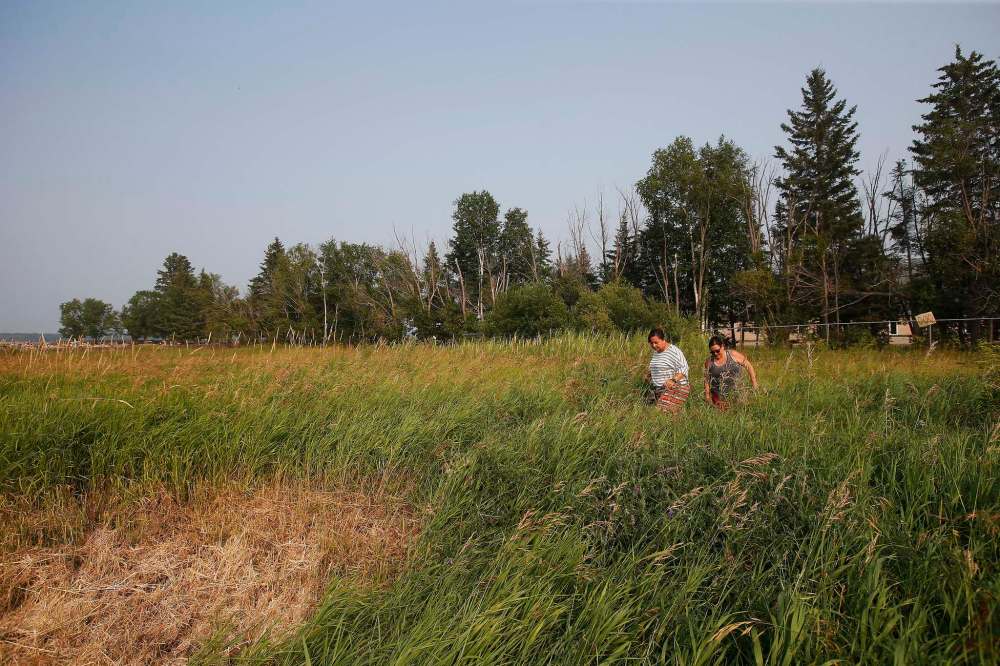
The community spent Sunday in ceremony, before smudging the old school grounds Monday. On Tuesday, the search began.
Chief Derrick Henderson told the Free Press many band members are impatient and do not want to wait for the revelations to come. He’s warned them it could take time.
“I think the community wants me to get it done now — today — and be done with it tomorrow. But I said to them last night that this is going to be a long process,” Henderson said.
Sagkeeng First Nation will have to wait to learn which of its ancestors may be buried in unmarked graves below its feet. Unfortunately, they — like First Nations people across Canada — have a lot of experience in the art of waiting.
Indigenous people had to wait until 1960 to gain the right to vote. They continue to wait for the full scope of promises made to them during treaty negotiations to be honoured.
Phil Fontaine called for a national inquiry into residential schools in 1990 but had to wait 18 years for the Truth and Reconciliation Commission.
The TRC’s 94 calls to action were issued in 2015 and Indigenous people are still waiting for 84 of them to be implemented.
In 2017, the Sagkeeng healing lodge requested capital funding for a new building, a day program and a withdrawal-management unit. Instead, it waits.
And in a region gripped by crime, where Indigenous people are incarcerated at high rates, Sagkeeng First Nation is still waiting for those responsible for the greatest crime of all — the Fort Alexander Indian Residential School — to be brought to justice.
Waiting, waiting, waiting.
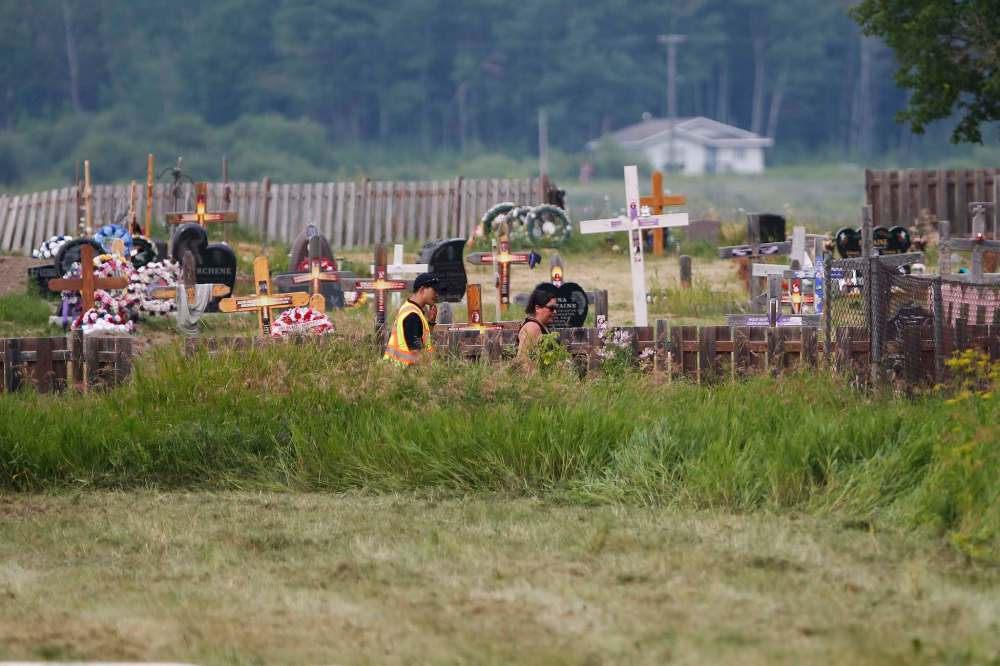
When the statues of Queen Elizabeth and Queen Victoria were pulled down in a fit of righteous anger outside the Manitoba Legislative Building earlier this month, those responsible were widely denounced. Some even likened the destruction of inanimate objects to literal violence.
Just wait a bit longer, they were told, and reconciliation will come. Do things the right way: write some more letters, gather some more signatures, wait some more.
They have been waiting for generations.
They have been waiting for white Canadians to open their eyes, open their ears and open their hearts. They have been waiting for this country to come to grips with the true history of this land.
Meanwhile, communities have gone without clean drinking water, elders have grown old and died, brothers and sisters have been locked up and a new generation of babies has been snatched from parents’ arms by a broken, racist child-welfare system.
And as they wait, politicians have tried to sanitize and rewrite a history they know all too well. They have been waiting, too, for those scars to heal.
Waiting, waiting, waiting.
They have been waiting 150 years.
How long must they wait?
ryan.thorpe@freepress.mb.ca
Twitter: @rk_thorpe

Ryan Thorpe likes the pace of daily news, the feeling of a broadsheet in his hands and the stress of never-ending deadlines hanging over his head.
Our newsroom depends on a growing audience of readers to power our journalism. If you are not a paid reader, please consider becoming a subscriber.
Our newsroom depends on its audience of readers to power our journalism. Thank you for your support.

